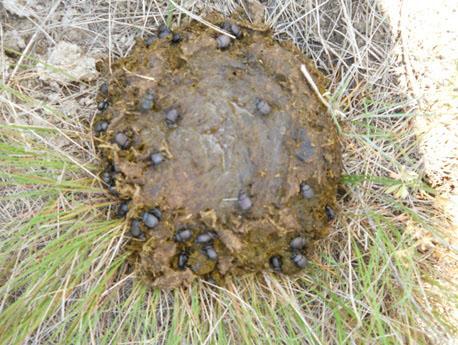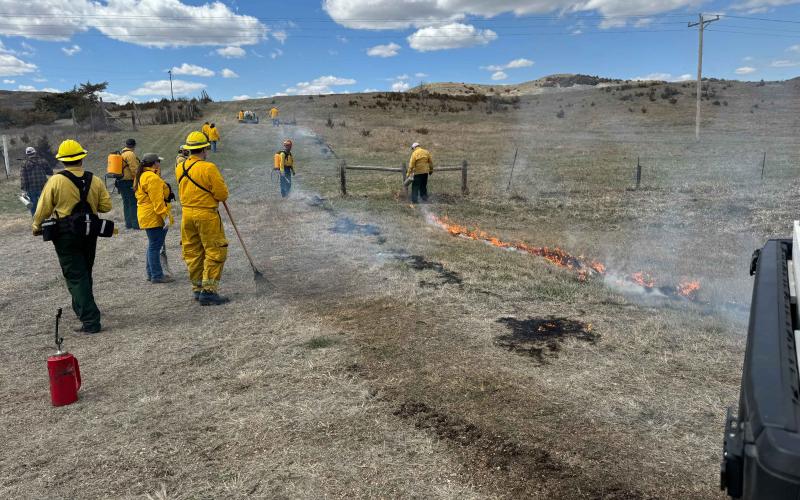In South Dakota, cattle production on rangelands is a very important industry. To support this industry, it is essential that our rangelands are well cared for. A key contributor of maintaining a healthy rangeland is the presence of a healthy insect community. This community consists of many beneficial insects including pollinators, predators, and decomposers. One of the most influential of these beneficial insects are the dung beetles.
Benefits of Dung Beetle Activity

Dung beetles are coprophagous (i.e., dung-feeding) insects that play a vital role in the decomposition process of animal waste. In South Dakota, dung beetles help regulate rangeland health through dung dispersal. They work to rapidly remove dung from the surface and bury it underground to feed their offspring (Figure 1). By burying dung, the beetles contribute to increasing organic matter content and overall soil fertility. These nutrient pulses become available to grassland vegetation, which helps to boost forage production.

Breaking down dung piles also assists with the suppression of dung-breeding livestock pests. These pests include flies, parasitic nematodes, and protozoa that can infest or prey upon livestock, which eventually results in economic losses. Through their daily activity, dung beetles help speed up dung decomposition and disrupt the life cycles of any developing pests (Figure 2).
Promoting Populations
Supporting healthy dung beetle populations on rangeland comes down to management. In terms of grazing management, certain grazing practices can help promote dung beetles. Rotational grazing has been shown to favor dung beetle abundance as well as species variety. Grazing cattle at higher stocking densities increases the concentration and dispersal of dung piles, which is very influential for attracting dung beetles.
Another factor affecting dung beetles is the non-target impacts from treating pasture and livestock pests with insecticides. The application of broad-spectrum insecticides, pour-ons, and avermectins should be used sparingly or avoided unless absolutely necessary. These chemicals have long residuals that can be detrimental to the development and survival of dung beetles. Products like insecticidal ear tags or short-residual “knockdown” sprays are more target-specific and have a smaller risk of impacting dung beetles through contact.
Keep in mind that dung beetle populations grow relatively slowly in comparison with many other insects. Dung beetles exhibit a great amount of parental care and do not brood very many offspring each season. Any setbacks caused by insecticide misuse or overuse will take some time to recover. In most cases, it will take years to rebuild a diminished dung beetle population back up to substantial levels. However, this can eventually be achieved with appropriate management.


